After much anticipation, the vendange finally began this week. While it has been fun being photographed wrapping corks and cleaning barrels by Chinese tourists – although I feel that I somewhat spoilt the rustic atmosphere they were looking for by wearing my Palace shirt and blasting out Arctic Monkeys on my headphones as I did it – it couldn’t have come sooner.
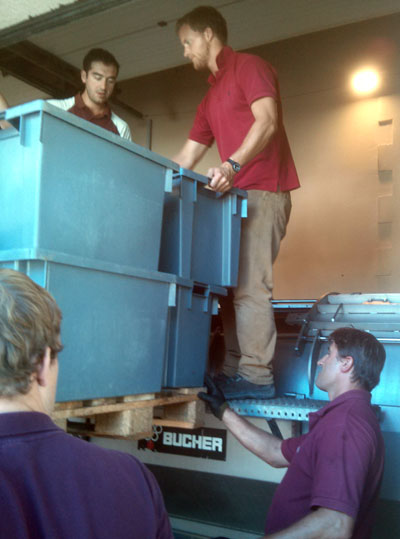
Cajettes and the pressoir
|
This was the exciting wine-making process I had been waiting for, and it has not disappointed. The days begin in a tranquil manner with odd jobs being fulfilled but such an ambience is always cut short by the first shout of “cajettes ! cajettes !”. All too quickly a tractor arrives with a trailer filled with cajettes (plastic boxes brimming with grapes) and everyone must immediately be on hand to load them into the pressoir. If wine-making is a war (humour me), then this is the bomb going off in the trenches and the “ecstasy of fumbling” which follows is both exhilarating and exhausting.
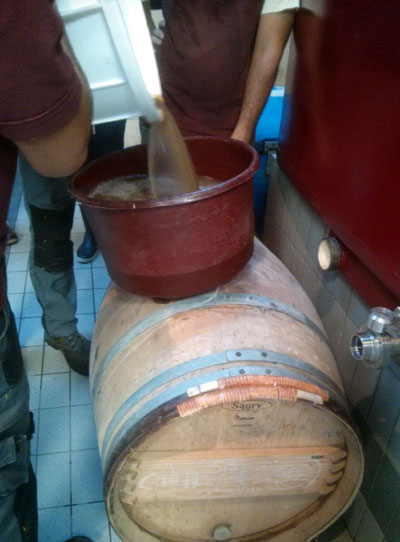
The first cloudy juice is poured into a barrel
|
Through various roles that involve stacking, washing and passing, the cajettes systematically go from full to cleaned and neatly stacked, ready to be sent off and filled up again by the pickers. Within ten minutes of flinging ourselves about, gallons of juice are already pouring out of the bottom of the pressoir. We then clean up and pick the insects off ourselves that fall out the cajettes (yes, wine is about 2% earwig, sorry vegetarians) and carry on with the next stages of the process.
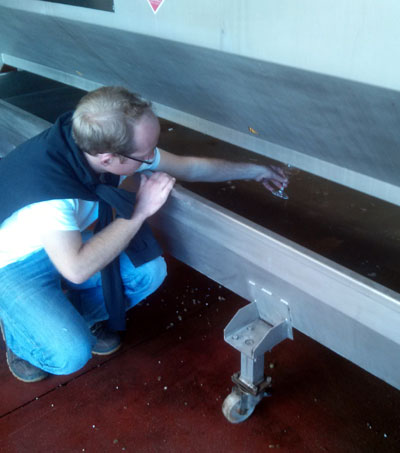
The maître du chai takes a taste of freshly pressed grape juice
|
The first thing that is done is taking the first batch of juice and immediately transferring it to barrels set aside so that it is given a long time to sit and let all sediment sink to the bottom. This is because the first juice to come out is the cloudiest juice as it has had more contact with small amount of dirt and dust on the outside of the grapes. The rest of the juice then slowly trickles from the pressoir over the course of a couple hours while frozen carbon dioxide is thrown into the reservoir. As this substance sublimes, the atmosphere around the juice becomes more saturated with carbon dioxide, reducing the amount of oxygen in contact with the juice. There is a small laboratory in the chai and the juice is constantly being tested for pH levels and turbidity (murkiness). Turbidity is actually much more important than I first thought, as the efficacy of the yeast depends on its ability to latch on to particles suspended in the juice.
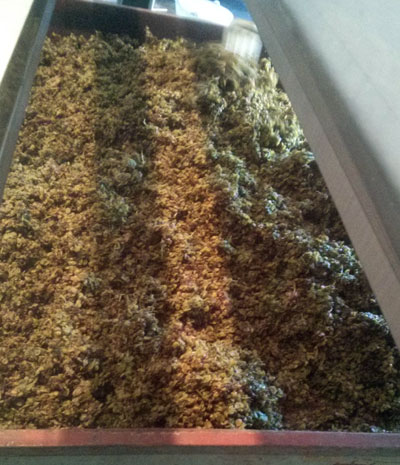
Completely dessicated skins are cleaned out
|
Next comes the debourbage. When the juice has been left to sit in barrel for a day and a lot of the sediment in it has sunk to the bottom, the clear juice is taken out. This is done by placing a nozzle into the top of the barrel which sends a jet of water vapour into the barrel, forcing the wine out a hole in the side. Again, a lot of care is taken to avoid too much oxygen contact with the juice. After this, one prepares the yeast culture and adds it to the wine and sets the barrel aside for fermentation. All fermenting juice is of course, fastidiously monitored, and one of my jobs has been to test the density and temperature of the juice in each barrel. You would think there would be some sort of special equipment to extract the juice from the barrels but no, one simply uses some plastic tubing to siphon out the juice. As I was doing this at about 8.15am, I apologise if Chevalier Blanc 2013 has a hint of Aquafresh to it.
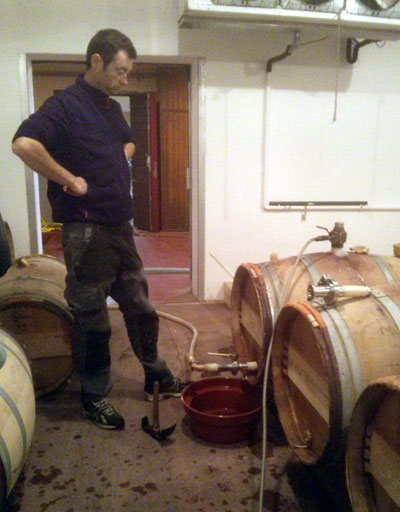
Debourbage
|
All in all, an exciting week at Chevalier. The weather has been in the 30s, making things look more optimistic for the red which is expected to begin in this coming week as we finish the white, bringing a slightly different process and even more for me to learn and do.
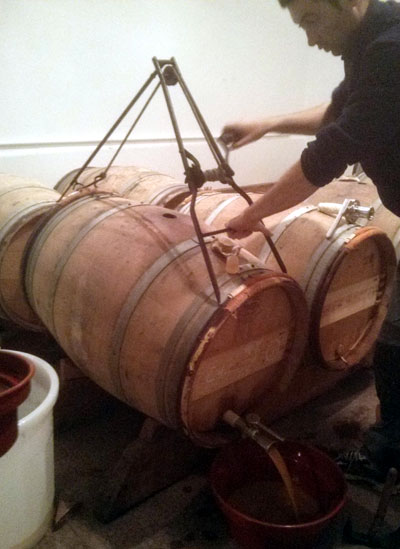
A barrel is lifted by hand
|